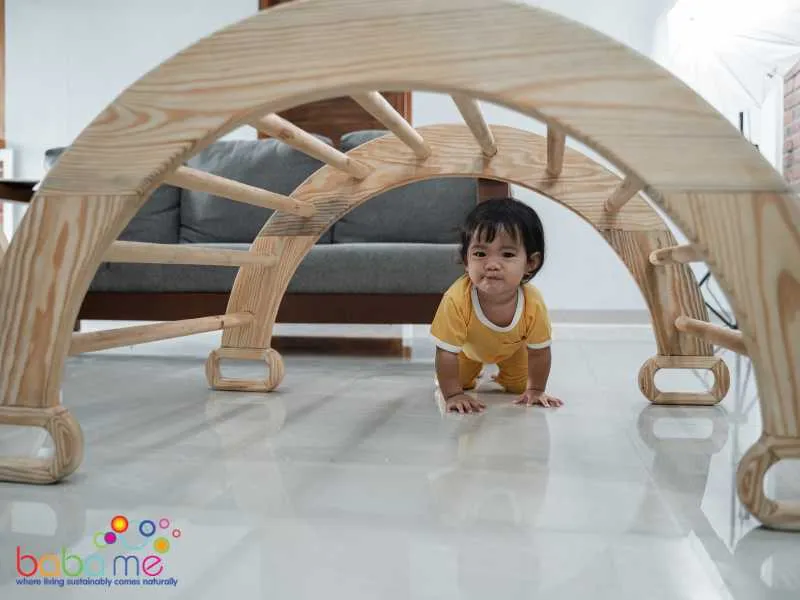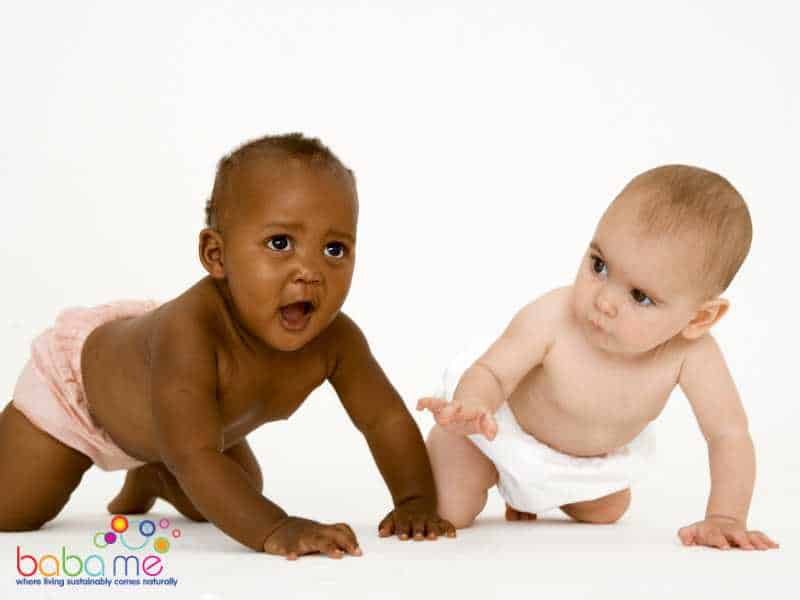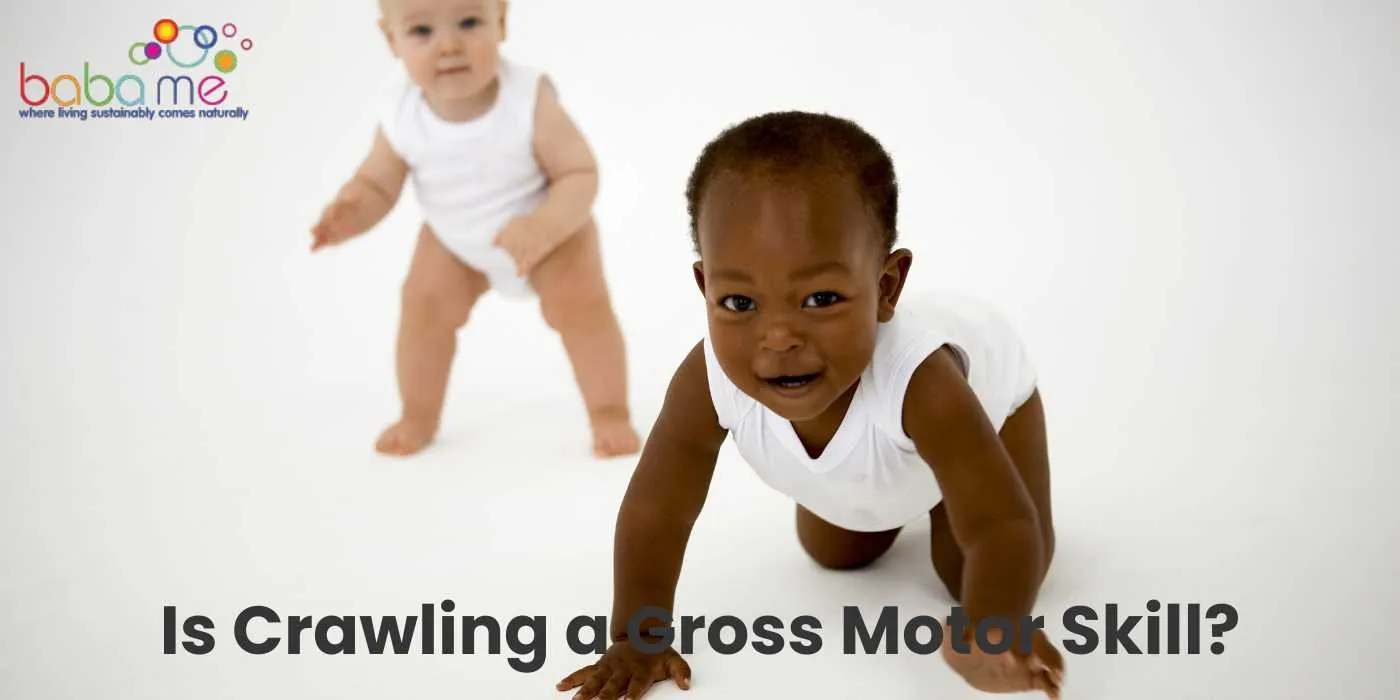As parents, we are always eagerly anticipating our child’s firsts. Among these significant milestones, crawling holds a special place. It marks the beginning of a child’s adventurous interaction with the world.
But did you know that crawling is more than just a baby’s first mode of independent transportation? It’s a pivotal gross motor skill that forms the foundation of physical development, with profound influences on various facets of a child’s growth.
We dive into the fascinating world of gross motor skills, spotlighting the significant role that crawling plays in this context.
Is Crawling a Gross Motor Skill?
Yes, crawling is a gross motor skill. Gross motor skills involve the large muscles of the body and are responsible for activities such as crawling, walking, jumping, and playing sports. Crawling helps develop coordination, balance, and strength, and it plays a crucial role in integrating the brain’s hemispheres and setting the foundation for more complex activities and tasks as a child grows.
What is a Gross Motor Skill?
Gross motor skills are the abilities usually acquired during infancy and early childhood as part of a child’s motor development. These skills involve the larger, stronger muscle groups of the body. In particular, they are centered around improving core muscle groups that aid in standing, walking, running, and sitting upright, among others.
Examples of Gross Motor Skills
There are many different examples of gross motor skills that children learn and develop throughout their lives. Some examples of gross motor skills include:
Crawling
Walking
Running
Jumping
Hopping
Skipping
Throwing and catching a ball
Balancing
Climbing
Riding a bike
These skills are typically developed in a specific order, with each skill building upon the previous one. Crawling is usually the first gross motor skill that a child develops, followed by walking, running, and jumping. As children get older, they may develop more complex gross motor skills such as climbing and riding a bike.

Crawling as a Gross Motor Skill
Crawling is an important developmental milestone for infants that helps them build gross motor skills. Gross motor skills are movements that use larger muscles, such as the arms, legs, and torso and a baby crawling (whether on their knees crawling or doing belly crawling, criss cross crawling or even backward crawling – they all involve coordinated movements even if you do think its abnormal crawling) is a vital part of this development. This is the same as a baby balancing, walking or visual tracking and coordination.
Developmental Milestones of Crawling
Infants typically start crawling between 6 to 10 months of age. Crawling is preceded by other developmental milestones such as rolling over, sitting up, and pushing up on their hands and knees.
As infants gain strength and coordination, they begin to move their limbs in a coordinated motion to propel themselves forward.
There are different types of crawling, including the traditional hands-and-knees crawl, the army crawl, and the bottom scoot. Regardless of the type of crawling, infants use their arms and legs to move their bodies forward and develop muscle strength and coordination in the process.

Importance of Crawling for Development
Crawling is not only important for building gross motor skills but also for developing other skills such as fine motor skills, visual perception, and cognitive skills. Crawling helps infants develop hand-eye coordination and spatial awareness as they navigate their environment.
It also helps them develop cognitive skills such as problem-solving and decision-making as they learn to avoid obstacles and navigate around them.
Proper crawling also helps with oral motor development and speech. Crawling helps infants develop the muscles in their mouth and throat, which are important for speech and language development.
Crawling helps infants develop core strength, which is important for posture and balance as they learn to stand and walk so its vital to give your baby as much floor time as you can, tummy time should start from when they are a newborn!
Factors that Affect Crawling
There are several factors that can affect an infant’s ability to crawl. These include physical factors such as muscle weakness or tightness, developmental delays, and neurological conditions.
Environmental factors such as the type of flooring and the amount of space available to crawl can also affect an infant’s ability to crawl.
Parents and caregivers can help infants develop their crawling skills by providing plenty of opportunities to practice and by creating a safe and supportive environment.
This includes providing a safe and clean space to crawl, encouraging infants to explore their environment, and providing plenty of opportunities for tummy time to help infants develop core strength.

FAQs on Crawling and Sensory motor skills
What is the importance of sensory motor skills in early childhood?
Sensory motor skills are vital for a child’s overall development as they involve the integration of sensory and motor systems. This sensory and motor interaction are the foundation for learning and help children develop essential abilities, such as balance, coordination, and body awareness.
As babies engage in activities like creeping, crawling, reaching, pulling, rolling over, and babbling, they strengthen their sensory motor function and sensory input and pave the way for more complex tasks and learning as they grow, so sensory stimulation is vital for children of all ages to improve their sensory skills.
How does crawling contribute to a child’s development?
The vitally important crawling stage is an essential milestone in a child’s development as it helps build coordination, strength, and balance. It also plays a critical role in integrating the brain’s hemispheres, which is crucial for cognitive, emotional, and physical development. Crawling enhances a child’s spatial awareness and problem-solving abilities, setting the stage for future learning and growth.
Can developmental or learning difficulties be associated with sensorimotor system delays?
Yes, often children who have difficulties with learning or exhibit developmental disorders may experience sensorimotor skills delays. This refers to the delay in the development of skills that involve both the sensory system and motor (movement) systems of the body.





